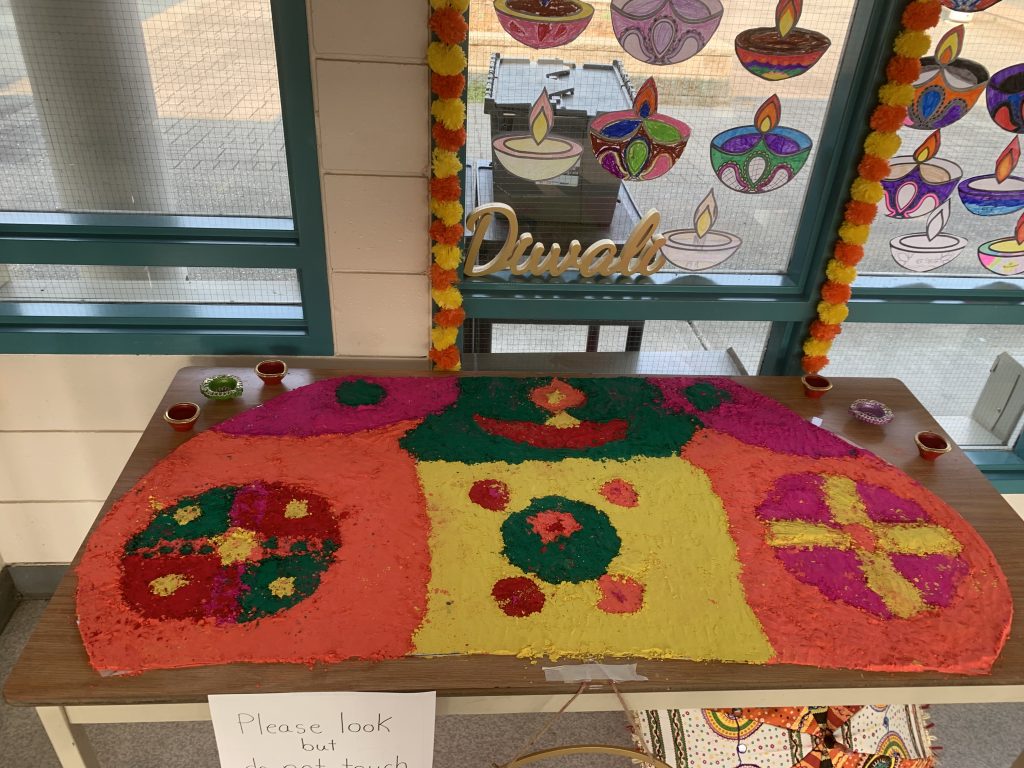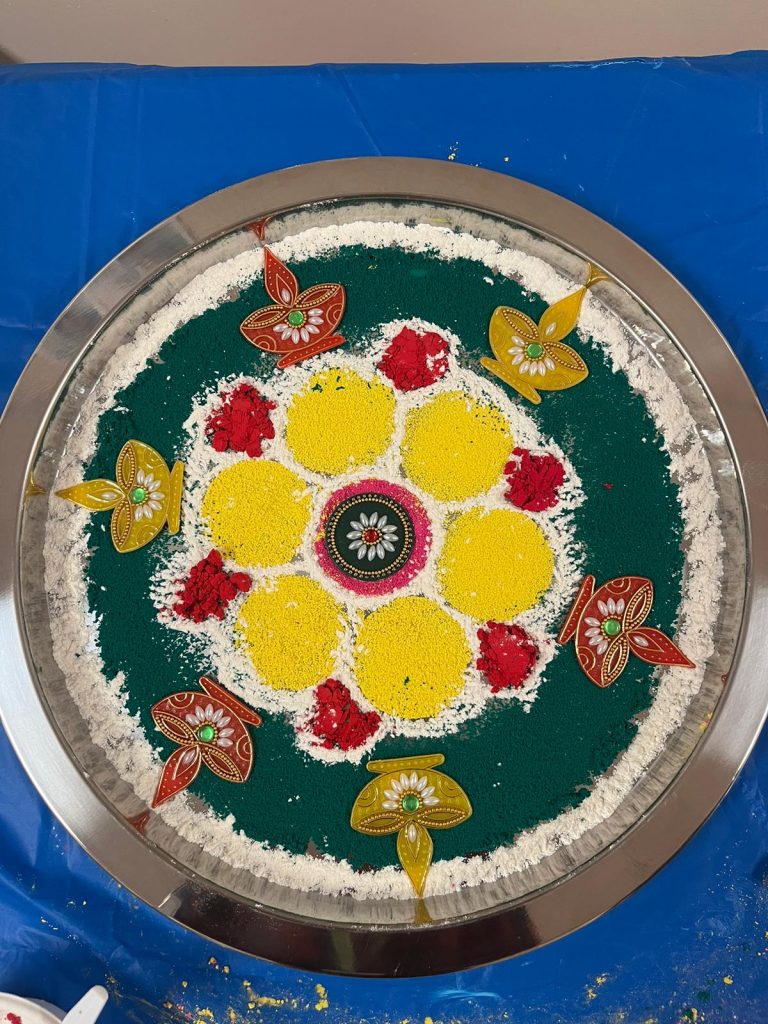After years of teaching English Language Learning (ELL) students, we noticed a common theme when it came to celebrating calendar holidays such as Thanksgiving, Christmas, and Easter—our students excitedly shared and made their own cultural connections to the holidays. However, we realized that while students felt comfortable sharing their cultural celebrations, festivals, and holiday traditions during small-group literacy lessons, many didn’t know how, or felt too shy, to share with their peers in other settings. We began to explore how to create authentic resources highlighting student experiences.
How It Started – Diwali
First, we decided to create more resources about a festival that we are familiar with called Diwali. We searched our school and community libraries and investigated online resources such as Teachers Pay Teachers and YouTube videos for inspiration. Even with the variety of resources at our disposal, we felt that we could further amplify our student voices and experiences through a video project.
 At the time, because of the global pandemic, we had to take precautions in creating the project and decided to put ourselves and our families in the video to create an authentic experience. We relied heavily on Zoom meetings to pool our ideas. First, we wrote a script using kid-friendly language to explain Diwali. Next, we collected and took photos to provide further visual representation. Third, we found a videographer to document the project. Once the project was complete, the Diwali video was shared in our school district. To further supplement the video, we also created and attached a Diwali lesson plan for teachers to use as a part of their instruction.
At the time, because of the global pandemic, we had to take precautions in creating the project and decided to put ourselves and our families in the video to create an authentic experience. We relied heavily on Zoom meetings to pool our ideas. First, we wrote a script using kid-friendly language to explain Diwali. Next, we collected and took photos to provide further visual representation. Third, we found a videographer to document the project. Once the project was complete, the Diwali video was shared in our school district. To further supplement the video, we also created and attached a Diwali lesson plan for teachers to use as a part of their instruction.
The Indo-Canadian ELL students in our district were excited to see the representation in this Diwali video, and more ELL students were inspired and asked to create another video.
Another Holiday Video Creation – Ramadan
The following spring, we released a second student-led video about Ramadan and Eid. Students were interviewed and were thrilled to share their personal experiences and knowledge about Ramadan and Eid. The district videographer visited the schools to put the video together. Since it took some time to compose the video, we were very appreciative of the final product. We also asked a colleague from the ELL department to join the video project to share her personal experiences about Ramadan and Eid. The video was shared as a resource within the school district. Families reached out to us to share their gratitude and express how they felt welcomed, celebrated, and honoured.
What’s Next?
Looking into the future, we are excited to collaborate again and create student-led videos that celebrate the diversity found in our schools.
WHAT IS DIWALI, RAMADAN, AND EID?
What is Diwali?
Diwali, a festival of lights, is celebrated around the world by Sikhs, Jains, and Hindus. The word Diwali comes from the Sanskrit word deepavali, which means “rows of lighted lamps.” Houses, shops, and public places such as temples are decorated with small oil lamps called diyas. Diyas represent happiness and health. Traditional stories describe Diwali as light over darkness. Families visit the Gurdwara (temple) in the evening to light diyas around the temple. People offer prayers for loved ones and wishes for happiness, joy, health, and prosperity. Before leaving the temple, people enjoy vegetarian food in what is called the langar hall. The food is prepared and served by volunteers.
Diwali is perhaps the best time to let people know how much they mean to us. Women, men, and children often wear traditional outfits and jewelry. Wearing new clothes symbolizes starting fresh, and the bright colours represent bringing in light and happiness.
Rangoli is a type of traditional art that is used with coloured rice, rice powder, flowers, and diyas to make designs near the door entrance. People can be creative and make designs that are unique to them. Rangoli symbolizes welcoming people into your home. Another type of Diwali art that is commonly practised is the use of mehndi. Mehndi, or henna, is applied to the hands, leaving a beautiful orange/reddish stain when it dries, symbolizing good luck and happiness.
To wrap up Diwali celebrations, families often enjoy bhangra music and dance and light fireworks and sparklers. Families celebrate Diwali in their own ways with festive and joyful activities.
What is Ramadan and Eid?
 For millions of Muslims across the world, Ramadan is an important time of the year. It is celebrated in the ninth month of the Islamic calendar, and it begins on the first sighting of the new crescent moon. Ramadan is a month of good deeds, charity (such as sharing with those in need), and a new beginning for many Muslims.
For millions of Muslims across the world, Ramadan is an important time of the year. It is celebrated in the ninth month of the Islamic calendar, and it begins on the first sighting of the new crescent moon. Ramadan is a month of good deeds, charity (such as sharing with those in need), and a new beginning for many Muslims.
A significant part of Ramadan is fasting. According to those practising Ramadan, fasting is a sign of gratitude, and it cleanses the body. Muslims regularly pray five times a day, and during Ramadan they do extra prayers at home or at a mosque.
At the end of the Ramadan month, there is a three-day celebration called Eid Al-Fitr, which means the festival of the breaking of the fast. Eid starts with a prayer. Some people dress up and gather to enjoy a feast, treats, and exchange gifts. It is a time for reflection with family and community.
Online Resources
https://www.sd42.ca/district-highlight/sd42-celebrates-diwali/
https://www.sd42.ca/ramadan-broadens-understanding/
ABOUT THE AUTHORS
Sukhdeep Birdi, Kawaldeep Ghuman, and Harjit Chauhan
Sukhdeep Birdi, Kawaldeep Ghuman, and Harjit Chauhan are English Language Learning teachers in the Maple Ridge and Pitt Meadows School District in British Columbia (District #42).
This article is featured in Canadian Teacher Magazine’s Winter 2023 issue.









